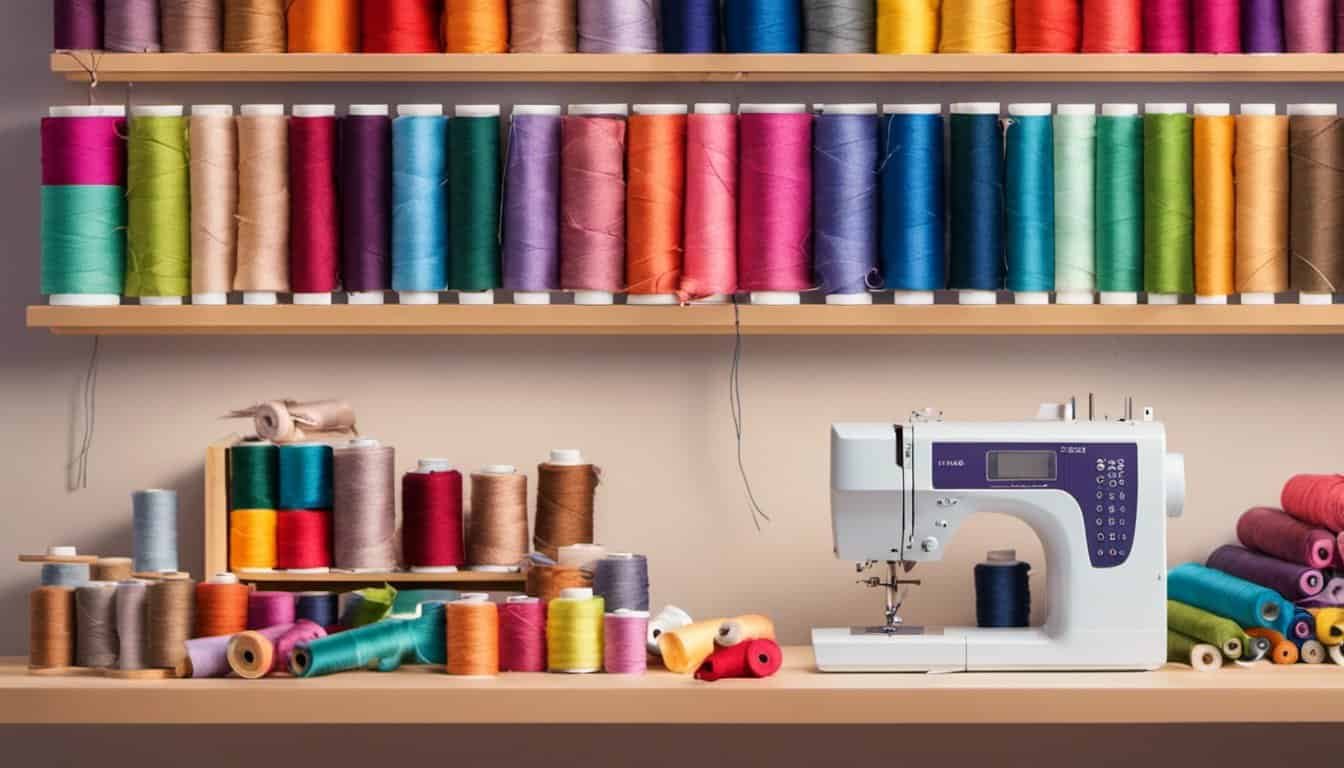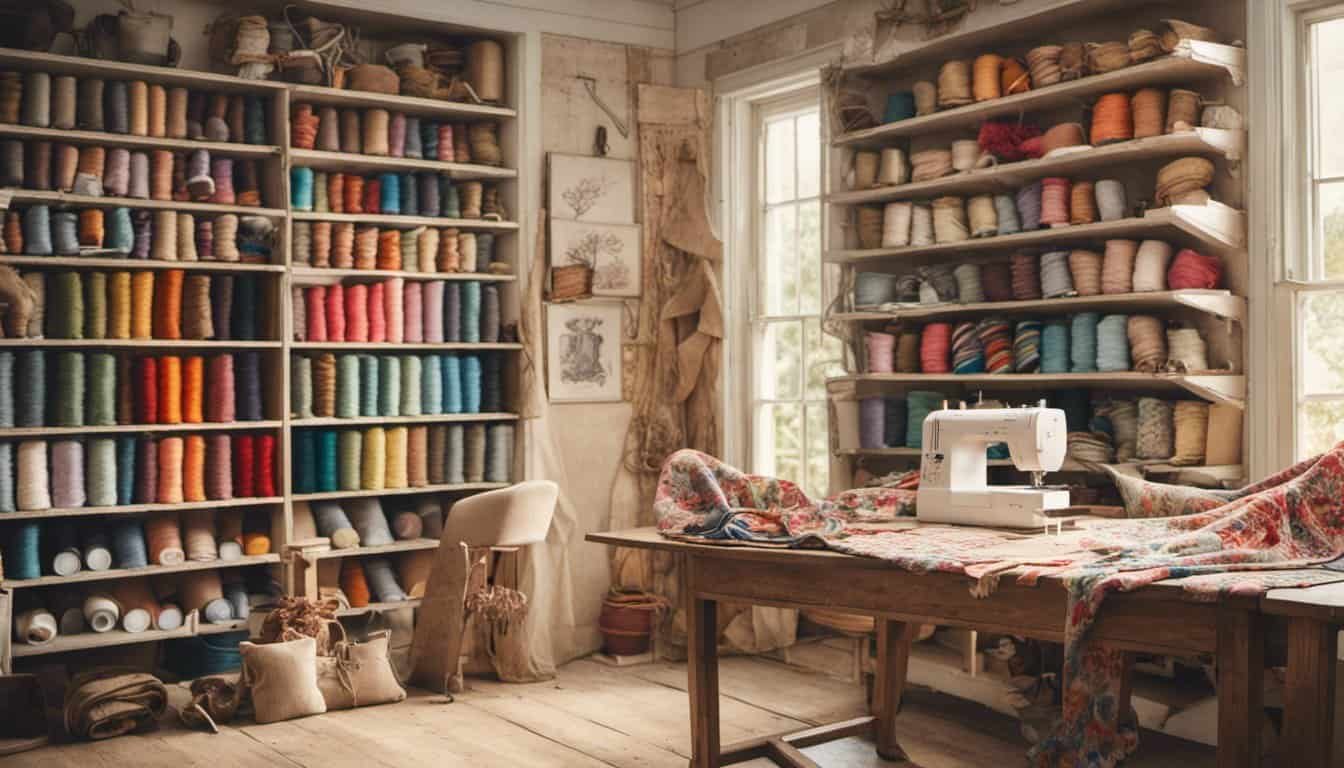Imagine yourself stepping into the vibrant world of the 1920s, where sewing wasn’t just a pastime but a creative expression. The Art Deco movement was transforming everything from architecture to fashion, and your sewing projects were no exception.
With bold lines, geometric patterns, and luxurious fabrics, sewing during this era let you bring the sleek elegance of Art Deco into your home and wardrobe. Whether you were crafting intricate dresses or stylish home décor, the influence of Art Deco made every stitch a statement.
Join us as we explore how the Art Deco aesthetic shaped sewing trends in the 1920s, inspiring countless enthusiasts to embrace a new era of design and creativity.
The Rise of Sewing in the 1920s
Sewing gained unprecedented popularity in the 1920s, fueled by technological advancements and cultural shifts. You embraced home sewing as a practical skill and a creative outlet, transforming everyday garments and accessories.
Technological Innovations
Innovations made sewing more accessible and efficient. The introduction of electric sewing machines increased production speed, allowing you to complete projects faster. Pattern companies expanded their offerings, providing a variety of styles to meet the era’s fashionable demands.
Economic Factors
Economic prosperity encouraged you to invest in quality fabrics and materials. The availability of affordable textiles like silk blends and rayon made luxurious designs attainable. Additionally, department stores promoted sewing as a desirable hobby, offering classes and workshops that attracted a broader audience.
Cultural Influences
The Art Deco movement significantly shaped your sewing trends. Geometric patterns, bold colors, and intricate details became staples in your projects. You incorporated these elements into clothing, home décor, and accessories, reflecting the era’s modern aesthetic.
Social Changes
Women gained greater independence, influencing your sewing practices. As more women entered the workforce, practical yet stylish clothing became essential. You adapted by creating versatile pieces that balanced functionality with the latest fashion trends.
Popular Sewing Projects
You focused on various sewing projects that mirrored the decade’s spirit:
- Clothing: Flapper dresses, tailored suits, and embellished blouses showcased your creativity.
- Accessories: Clutches, headbands, and decorative scarves added flair to your outfits.
- Home Décor: Geometric curtains, upholstered furniture, and intricate embroidery enhanced your living spaces.
Community and Collaboration
Sewing circles and clubs provided you with a sense of community. Sharing patterns, techniques, and ideas fostered collaboration and inspired innovation. These groups played a crucial role in disseminating Art Deco styles and sewing best practices.
Educational Resources
Books, magazines, and catalogs became valuable resources for you. Publications like Vogue and The Kate offered patterns and tutorials that kept you informed about the latest trends. You utilized these guides to refine your skills and experiment with new designs.
Legacy of the 1920s Sewing Movement
The 1920s sewing boom left a lasting impact on your crafting techniques and aesthetic preferences. You inherited a rich tradition of Art Deco-inspired designs that continue to influence modern sewing projects today.
| Technological Innovations | Economic Factors | Cultural Influences |
|---|---|---|
| Electric sewing machines | Affordable textiles | Geometric patterns |
| Expanded pattern lines | Quality fabrics | Bold colors |
| Increased production speed | Department store classes | Intricate details |
By understanding the rise of sewing in the 1920s, you can appreciate how historical trends and technological advancements shaped your creative endeavors.
Art Deco: A Brief Overview
Art Deco emerged in the early 20th century, shaping the aesthetic of the 1920s and influencing your sewing projects with its elegance and modernity.

Key Characteristics of Art Deco
- Geometric Shapes: Features bold, symmetrical patterns with triangles, zigzags, and chevrons.
- Luxurious Materials: Utilizes fabrics like silk, velvet, and metallic threads for a rich texture.
- Bold Colors: Embraces vibrant hues such as gold, black, silver, and jewel tones.
- Intricate Details: Incorporates embellishments like beading, embroidery, and appliqués.
- Streamlined Silhouettes: Emphasizes clean lines and structured forms in designs.
Prominent Art Deco Designers
| Designer Name | Contribution to Art Deco Sewing |
|---|---|
| Paul Poiret | Introduced innovative garment designs with geometric cuts. |
| Coco Chanel | Integrated Art Deco elements into timeless fashion pieces. |
| Jean Patou | Known for elegant dresses featuring bold patterns. |
| Elsa Schiaparelli | Blended surrealism with Art Deco in her textile designs. |
Influence of Art Deco on Sewing
Art Deco transformed sewing practices by introducing distinctive design elements and luxurious materials. Embracing this style allows you to create garments and home décor that reflect the elegance of the 1920s.
Design Patterns and Motifs
Art Deco patterns emphasize geometric shapes and symmetry. You incorporate:
- Zigzags and Chevrons: Create dynamic movement in fabric designs.
- Stepped Forms: Add depth and dimension to seams and edges.
- Stylized Florals: Feature abstracted, simplified flower motifs.
- Sunbursts and Radiant Lines: Enhance visual interest and highlight focal points.
- Geometric Repeats: Ensure consistency and rhythm in large fabric areas.
Color Palettes and Fabric Choices
Art Deco color schemes focus on bold, vibrant hues paired with luxurious textures. Your choices include:
- Jewel Tones: Utilize emerald green, sapphire blue, and ruby red for richness.
- Metallic Accents: Incorporate gold, silver, and bronze to add shimmer and elegance.
- Contrasting Colors: Combine light and dark shades to create striking visual effects.
- Luxurious Fabrics: Select silk, velvet, satin, and high-quality cotton for a sophisticated finish.
- Bold Combinations: Experiment with unexpected color pairings to make impactful statements.
Example Color Palette
| Color | Hex Code |
|---|---|
| Emerald Green | #50C878 |
| Sapphire Blue | #0F52BA |
| Ruby Red | #E0115F |
| Gold | #FFD700 |
| Silver | #C0C0C0 |
Incorporating these Art Deco elements into your sewing projects infuses them with the glamour and modernity characteristic of the 1920s.
Evolution of Sewing Techniques
Sewing techniques in the 1920s transformed significantly, driven by technological innovations and evolving consumer tastes.
Technological Advancements
« How to Sew Hygiene Kits for Disaster Relief: Transform Lives with These Easy Steps
Electric sewing machines boosted your sewing speed and accuracy, enabling complex designs. Overlock machines streamlined fabric edges, reducing finishing time. Multiple stitch options expanded your creative toolkit, allowing for diverse patterns. Lightweight models increased portability, letting you sew anywhere in your home.
Shifts in Consumer Preferences
Consumers favored Art Deco-inspired styles, encouraging you to use geometric patterns and bold colors. Demand for ready-to-sew kits provided access to the latest designs, simplifying project execution. Home décor trends emphasized streamlined silhouettes and luxurious fabrics, aligning with modern aesthetics. Growing interest in quality craftsmanship motivated you to enhance your skills and explore new techniques.
Legacy of 1920s Art Deco in Modern Sewing
Art Deco’s influence remains prominent in today’s sewing projects, offering a blend of elegance and geometric precision. By incorporating characteristic elements, your sewing can reflect the timeless style of the 1920s.
Geometric Patterns and Designs
Modern sewing patterns often feature Art Deco-inspired geometry. Common motifs include:
- Zigzags: Sharp, angular lines that add dynamic movement.
- Stepped Forms: Layered shapes creating depth and dimension.
- Sunbursts: Radiant patterns that serve as focal points.
- Stylized Florals: Simplified floral elements with symmetrical arrangements.
These patterns enhance both garments and home décor items, providing a sophisticated aesthetic.

Bold Color Palettes
Art Deco’s vibrant color schemes continue to influence contemporary sewing. Popular hues include:
- Emerald Green
- Sapphire Blue
- Ruby Red
- Gold Accents
Using these colors in your projects can evoke the luxurious and glamorous feel of the 1920s.
Luxurious Materials
Incorporating high-quality fabrics is a hallmark of Art Deco sewing. Modern enthusiasts utilize:
- Silk
- Velvet
- Lace
- Beaded Embellishments
These materials add texture and richness, aligning with the opulent standards of the original movement.
Modern Sewing Techniques
Technological advancements have expanded the ways you can achieve Art Deco styles:

- Laser Cutting: Precision in geometric pattern creation.
- Appliqué: Adding intricate designs to fabrics.
- Embroidery: Detailed stitching to highlight patterns and colors.
- Mixing Textures: Combining different fabrics for a layered effect.
These techniques allow for greater creativity and accuracy in replicating Art Deco designs.
Contemporary Projects Inspired by Art Deco
Today’s sewing projects influenced by Art Deco include:
- Flapper Dresses: Updated with modern fabrics and fits.
- Tailored Blazers: Featuring geometric lapels and embellishments.
- Home Décor Items: Such as throw pillows, curtains, and upholstered furniture with bold patterns.
- Accessories: Including bags and scarves adorned with Art Deco motifs.
These projects showcase the enduring appeal and versatility of Art Deco in modern crafting.
Influence on Sewing Communities
Art Deco’s legacy fosters a collaborative spirit within sewing communities. Enthusiasts share patterns, techniques, and inspirations through:
- Online Forums
- Workshops
- Social Media Groups
- Crafting Events
This communal approach encourages the preservation and evolution of Art Deco-inspired sewing.

Educational Resources
Numerous resources help you integrate Art Deco into your sewing projects:
- Pattern Books: Featuring Art Deco designs and motifs.
- Tutorials and Guides: Offering step-by-step instructions for specific techniques.
- Magazines: Highlighting trends and showcasing completed projects.
- Workshops: Providing hands-on experience with Art Deco styles.
Utilizing these resources enhances your skills and facilitates the creation of authentic Art Deco-inspired pieces.
Sustainability and Art Deco
Modern sewing practices emphasize sustainability, aligning with Art Deco’s focus on quality and durability. By choosing:
- Eco-friendly Fabrics
- Vintage Patterns
- Recycled Materials
You honor the Art Deco legacy while contributing to environmentally responsible crafting.
Art Deco’s sophisticated aesthetic and emphasis on craftsmanship continue to shape modern sewing, allowing you to create elegant and enduring pieces that reflect a rich historical legacy.

Conclusion
Stepping into the world of 1920s sewing inspired by Art Deco opens up a realm of creativity and elegance for your projects. Embracing bold patterns and luxurious fabrics allows you to craft pieces that exude timeless style.
Experiment with geometric shapes and vibrant colors to bring that iconic Art Deco flair to your wardrobe and home décor. Let the spirit of the 1920s inspire your next sewing adventure, blending historical charm with your personal touch.
Joining sewing communities can spark new ideas and techniques, making your crafting journey even more enjoyable. Dive into this rich legacy and watch your creations shine with the glamour of the Art Deco era.

















